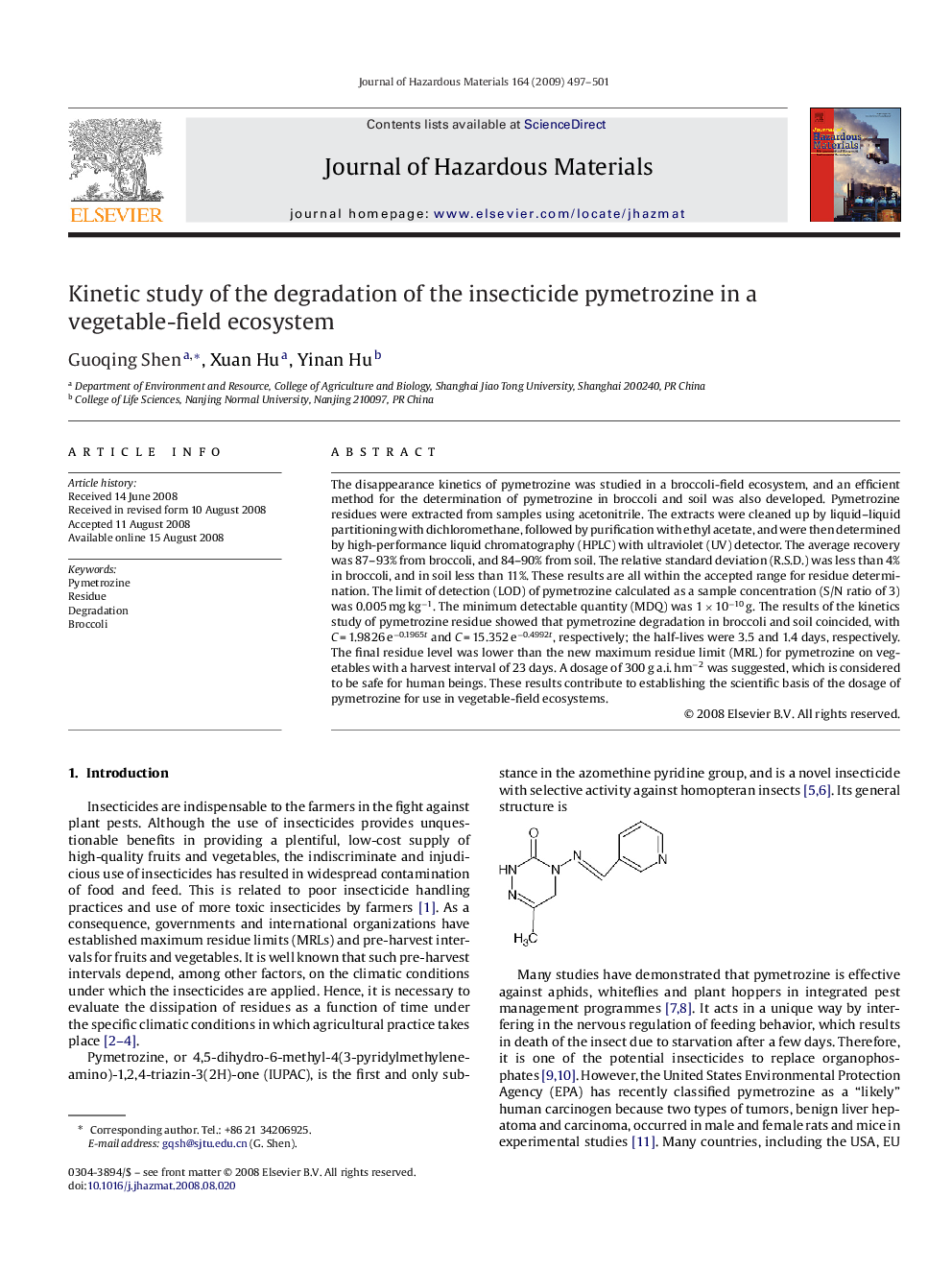| Article ID | Journal | Published Year | Pages | File Type |
|---|---|---|---|---|
| 582451 | Journal of Hazardous Materials | 2009 | 5 Pages |
Abstract
The disappearance kinetics of pymetrozine was studied in a broccoli-field ecosystem, and an efficient method for the determination of pymetrozine in broccoli and soil was also developed. Pymetrozine residues were extracted from samples using acetonitrile. The extracts were cleaned up by liquid-liquid partitioning with dichloromethane, followed by purification with ethyl acetate, and were then determined by high-performance liquid chromatography (HPLC) with ultraviolet (UV) detector. The average recovery was 87-93% from broccoli, and 84-90% from soil. The relative standard deviation (R.S.D.) was less than 4% in broccoli, and in soil less than 11%. These results are all within the accepted range for residue determination. The limit of detection (LOD) of pymetrozine calculated as a sample concentration (S/N ratio of 3) was 0.005 mg kgâ1. The minimum detectable quantity (MDQ) was 1 Ã 10â10 g. The results of the kinetics study of pymetrozine residue showed that pymetrozine degradation in broccoli and soil coincided, with C = 1.9826 eâ0.1965t and C = 15.352 eâ0.4992t, respectively; the half-lives were 3.5 and 1.4 days, respectively. The final residue level was lower than the new maximum residue limit (MRL) for pymetrozine on vegetables with a harvest interval of 23 days. A dosage of 300 g a.i. hmâ2 was suggested, which is considered to be safe for human beings. These results contribute to establishing the scientific basis of the dosage of pymetrozine for use in vegetable-field ecosystems.
Related Topics
Physical Sciences and Engineering
Chemical Engineering
Chemical Health and Safety
Authors
Guoqing Shen, Xuan Hu, Yinan Hu,
